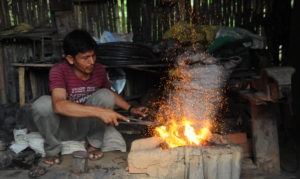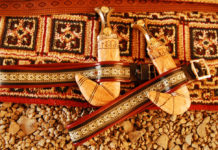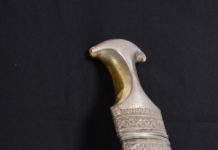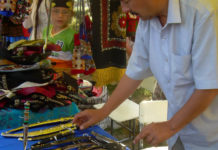Khukuri, which has become synonymous with the brave Gurkhas, is a metal weapon with slightly inward curve. It is sold with sheath, which is locally known as daap. Basically there are two types of khukuris—bhojpure and shirupate. Bhojpure khukuris are those made in Bhojpur. They have heavier, thicker and wider compared to shirupate khukuris. The name shirupate is derived from a grass called siru as the blade is very much similar to siru leaf. Sirupate khukuri is slimmer and thinner compared to other khukuris. The Bhojpur district in eastern Nepal is the major producer of khukuris. Dharan, Itahari, Jhapa, Dhankuta are the other major producers of traditional khukuris.

Khukuri is the national weapon of Nepal. For a soldier, it is a symbol of pride and valor. It is also used for decorative purposes, for chopping meat, wood and bushes, and gifted to friends and families as souvenirs. It caught world’s attention in the 1800s when Nepal went into war with invading foreign forces. Before the war, it was limited within the Gurkha community. The weapon is believed to be used for the past 2,500 years. Mainly Gajmer and Bishwokarma castes are involved in production of khukuris.
Apart from shirupate and bhojpure, other different types of khukuri are available in the market. Their shape varies according to their place of origin. Popular designs include chirra khukuri (more broad with curved blade), panawal khukuri (unique handle), Nepal Army and Police Khukuri (used in battles), religious khukuri (sacrificial purpose), khurmi or ladies khukhuri (half moon shaped used for household chores) and kothimara khukhuri (with scabbard made of silver).





